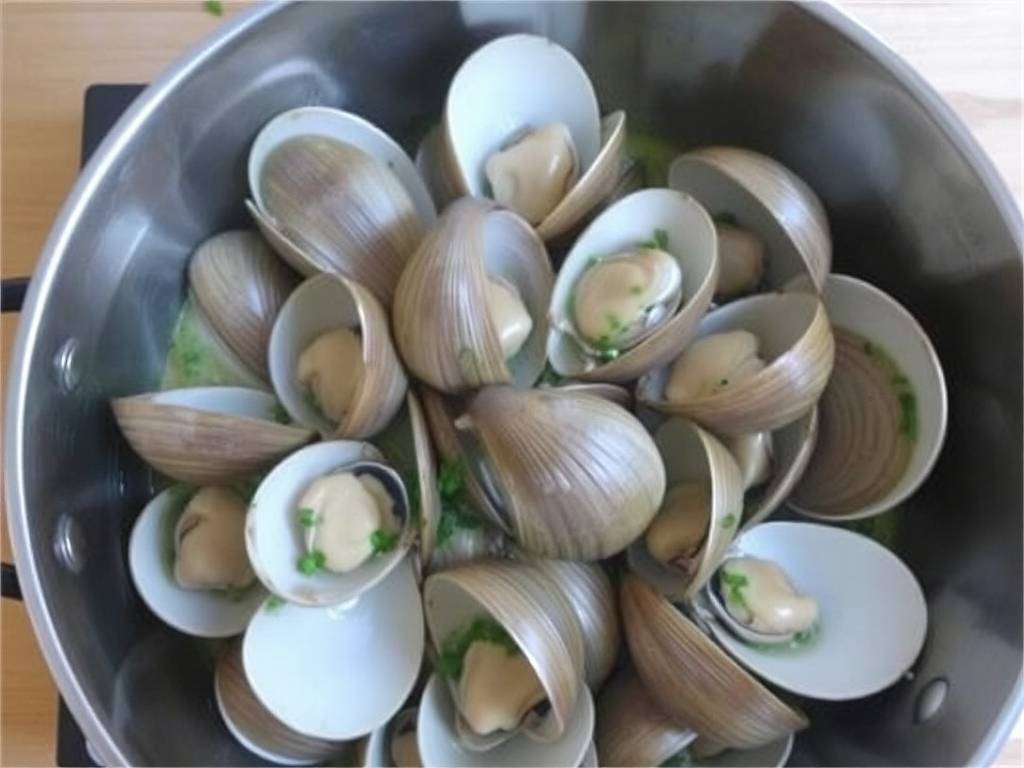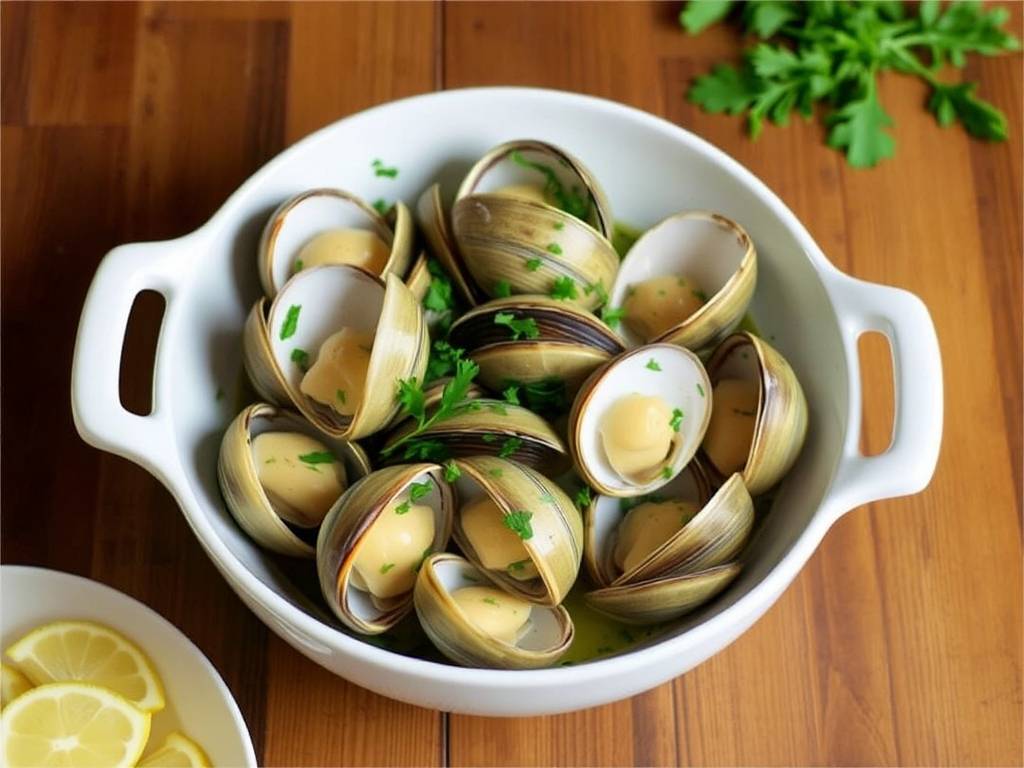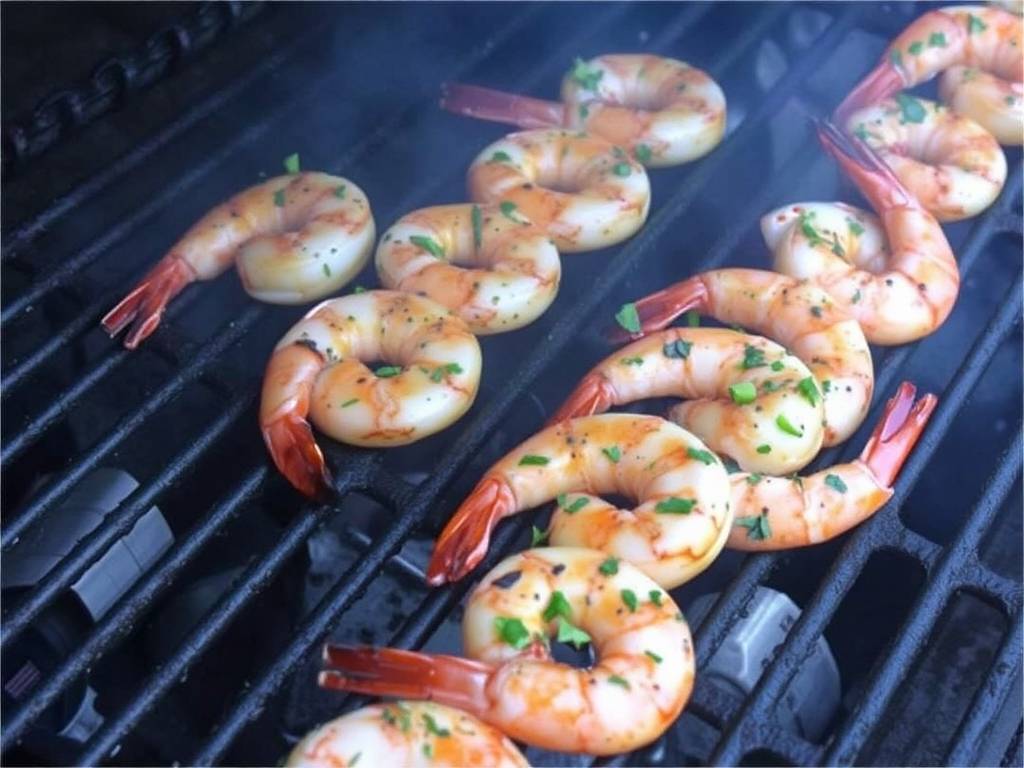There is a particular magic to cooking that transcends the mere act of sustenance. It is a dance of chemistry, a canvas for creativity, and a direct line to memory and place. Few dishes capture this essence as perfectly and elegantly as clams steamed in a broth of white wine, garlic, and finished with a vibrant shower of fresh parsley. This is not a dish of complex techniques or arcane ingredients; rather, it is a celebration of simplicity, where the quality of a few key components is allowed to shine in perfect harmony. To master this dish is to understand a fundamental principle of great cooking: sometimes, the best results come not from adding more, but from knowing what to highlight.
The journey to a perfect pot of clams begins not at the stove, but at the market. The star of the show is, unequivocally, the clam itself. Opt for varieties known for their tenderness and sweet, briny liquor. Littleneck clams are the classic choice, prized for their small size and delicate flavor. Cherrystone clams are slightly larger but equally delicious. Manila clams offer a wonderful, sweet alternative. Whichever variety you choose, the rules of selection are paramount. Seek out clams that are tightly closed or that close promptly when tapped lightly. This is the primary indicator of freshness. An open clam that does not react to a tap is dead and must be discarded, as it can spoil the entire dish. Avoid any clams with cracked or damaged shells. Plan to cook your clams the same day you purchase them for the best possible result.
Once home, the clams require preparation to rid them of the grit and sand that can ruin the sublime texture of the dish. Place the clams in a large bowl and cover them with cold, heavily salted water (use about 1/3 cup of salt per gallon of water). Some cooks add a handful of cornmeal to the water, believing it encourages the clams to purge more sand. Let them soak for 20 to 30 minutes. During this time, they will filter the water and expel much of the sand trapped inside their shells. After soaking, scrub each clam vigorously under cold running water with a stiff brush to remove any stubborn grit from the exterior. This step, while simple, is non-negotiable for a grit-free final product.

While the clams are purging, you have the perfect opportunity to prepare the aromatic foundation of the sauce. This is where the flavor base is built. Finely mince two to three cloves of fresh garlic. The goal is to have it melt into the sauce, infusing it with its pungent, sweet aroma without burning. Next, take a small yellow onion or a couple of shallots and dice them finely. Shallots are particularly lovely here, offering a more subtle, sophisticated flavor than a standard onion. Finally, take a healthy bunch of fresh flat-leaf parsley. Separate the leaves from the stems. Do not discard the stems! They are packed with flavor. Finely chop the stems and set them aside with the onion and garlic. Then, coarsely chop the parsley leaves; these will be added at the very end to preserve their bright green color and fresh flavor.
The choice of wine is critical. The old adage, "only cook with wine you would drink," has never been more true. You need not splurge on a grand cru Burgundy, but avoid any bottle labeled "cooking wine," as these are often loaded with salt and preservatives. Select a dry, crisp white wine. A Sauvignon Blanc, Pinot Grigio, or an un-oaked Chardonnay are all excellent choices. Their bright acidity will cut through the richness of the clams and balance their natural salinity. You will need about one cup of wine for the cooking process, which leaves the better part of the bottle to be enjoyed alongside the finished meal—a happy coincidence.
Now, the magic happens at the stove. Choose a large, heavy-bottomed pot with a tight-fitting lid. A Dutch oven is ideal. Place it over medium heat and add a generous glug of good quality extra-virgin olive oil—enough to coat the bottom of the pot. Allow the oil to heat until it shimmers, then add the chopped onion or shallot and the parsley stems. Sauté for 3-4 minutes until they become soft and translucent, but not browned. Then, add the minced garlic and a pinch of red pepper flakes, if you desire a subtle warmth. Cook for just 30 seconds more, until the garlic is fragrant. Burning the garlic at this stage will introduce a bitter note that is impossible to rectify.
It is time to introduce the wine. Pour the cup of white wine into the pot. It will sizzle and steam dramatically. Use a wooden spoon to scrape up any browned bits from the bottom of the pot—this is flavor. Let the wine simmer for a minute or two, allowing the alcohol to cook off and the flavors to meld. Now, carefully add the cleaned clams to the pot. They should form a single layer as much as possible. Immediately cover the pot with the lid. The goal is to create a sealed, steamy environment that will coax the clams open.
The cooking time from this point is brief, usually between 5 and 10 minutes. Do not be tempted to lift the lid frequently, as this will release the essential steam. You will know the clams are done when you hear a gentle roar of simmering liquid and peek to see that the majority of the clams have opened wide. Their shells will have parted, revealing the plump, cooked meat within. Any clams that remain firmly closed after this time should be discarded.

Using a slotted spoon or tongs, transfer the opened clams to a large, warm serving bowl. Now, turn your attention to the glorious liquid left in the pot. This broth is the soul of the dish—a concentrated essence of the sea, the wine, and the aromatics. To finish the sauce, increase the heat to high and let the liquid reduce slightly for a minute or two. Then, turn off the heat. Swirl in a few tablespoons of cold, unsalted butter. This step, called monter au beurre, thickens the sauce slightly, giving it a velvety texture and a lovely sheen. Stir in the reserved chopped parsley leaves. Taste the sauce—it may need a grind of black pepper, but it likely will not need salt due to the natural salinity of the clam liquor.
Pour the finished sauce over the clams in the serving bowl. The final dish should be a beautiful presentation: pearlescent shells nestled in a fragrant, golden-green broth. The aroma is intoxicating—a briny, herbal, and deeply inviting scent that promises pure delight.
Serving this dish is an event in itself. It demands to be shared. Place the bowl in the center of the table alongside a large bowl for discarded shells and crusty, warm bread. The bread is not a side; it is an essential tool for sopping up every last drop of the sublime sauce. A simple green salad with a sharp vinaigrette provides a refreshing counterpoint. And of course, pour the remaining chilled white wine into glasses.
In its essence, this dish is a lesson in restraint and respect for ingredients. It teaches the cook to listen—to the tap of a shell, to the sizzle of aromatics, to the gentle pop of a clam opening. It is a reminder that some of the world's most satisfying culinary experiences are not born from complexity, but from the perfect, harmonious balance of a few excellent elements. From the market to the table, the process is a ritual that connects us to the ocean, the vineyard, and the earth, culminating in a shared meal that is as memorable as it is delicious.






发表评论